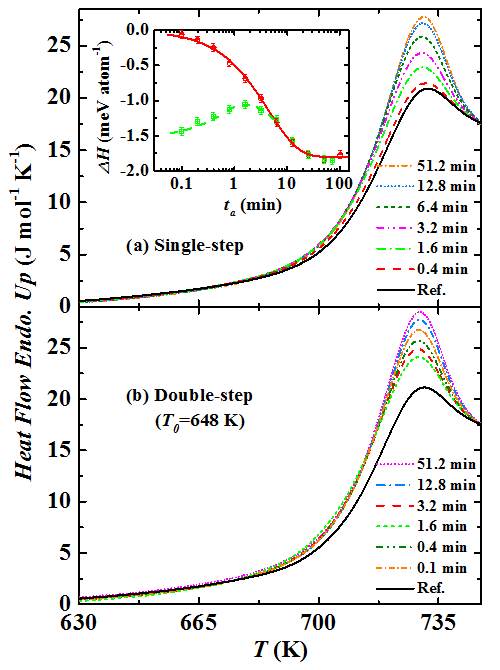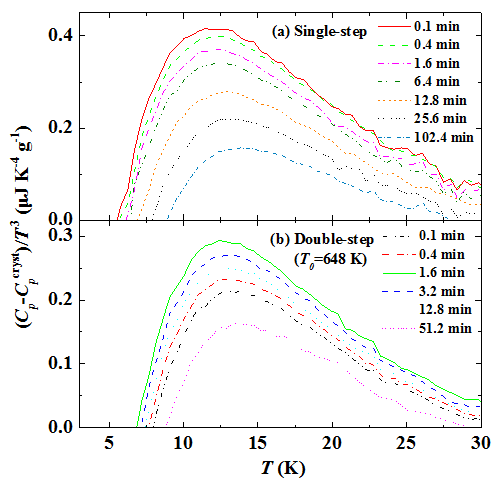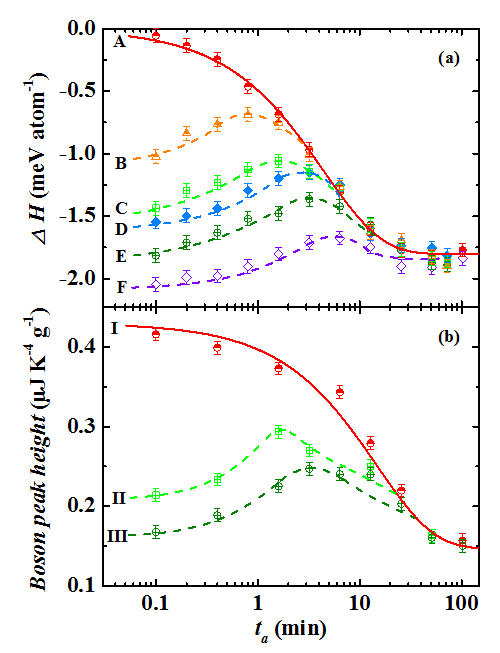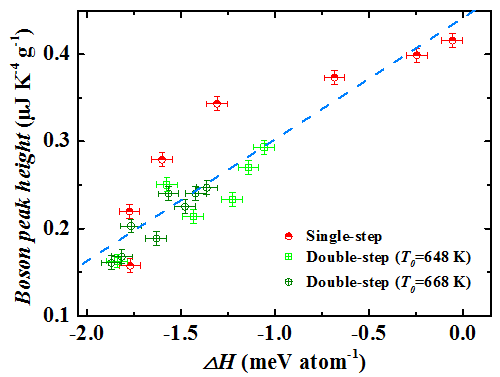|
|
[Home] - [News] |
Memory effect unveils the correlation between boson peak and structural relaxation
Glass is nonequilibrium and continually relaxes toward the metastable equilibrium state by structural rearrangement, but what is mysterious is that its past is always memorized. Glass is also disordered and exhibits markedly different atomic vibration from the ordered crystals, this difference is termed as a boson peak. These two features are central to understand glass but generally investigated separately. Recently Luo Peng et al. in Prof. WANG Weihua’s group from Institute of Physics, Chinese Academy of Sciences investigated if the atomic vibrational state can be memorized just like the structural arrangement in a metallic glass. Interestingly, they find that boson peak and structural relaxation evolve in line with each other and both exhibit history-dependent behaviors of memory effect. Thus the slow structural rearrangement by atomic motion and the fast atomic vibrational state have been experimentally shown to be correlated with each other, which presents a clearer picture for the profound understanding of the two dynamical behaviors in glass and provides robust evidence for discriminating between the different existing theoretical models.
This study entitled “Memory Effect Manifested by a Boson Peak in Metallic Glass” was published on Physical Review Letters http://journals.aps.org/prl/abstract/10.1103/PhysRevLett.116.175901
This work was supported by the NSF of China (Grant No. 51271195), MOST 973 Program (Grant No. 2015CB856800) and Chinese Academy of Sciences.
 |
| Figure 1. Enthalpy recovery during (a) single-step isothermal aging and (b) double-step isothermal aging. The nonmonotonic evolution of enthalpy reveals the memory effect. (Image by Institute of Physics) |
 |
| Figure 2. Boson heat capacity peak during (a) single- and (b) double-step isothermal aging. The nonmonotonic evolution of boson peak reveals the memory effect. (Image by Institute of Physics) |
 |
| Figure 3. The boson peak strength and the relative enthalpy change follow analogous evolution under the same thermal protocol. (Image by Institute of Physics) |
 |
| Figure 4. The boson peak strength and the relative enthalpy change show approximately a linear relationship. (Image by Institute of Physics) |
Contact:
Institute of Physics
WANG Weihua
Email: whw@iphy.ac.cn
WEN Ping
Email: pwen@iphy.ac.cn
Key word:
Glass; structural relaxation; boson peak; memory effect;
Abstract:
A glass memorizes its past concerning not only the disordered structural arrangement, but also the anomalous low-frequency atomic vibration, providing robust evidence for the correlation between boson peak and structural relaxation.